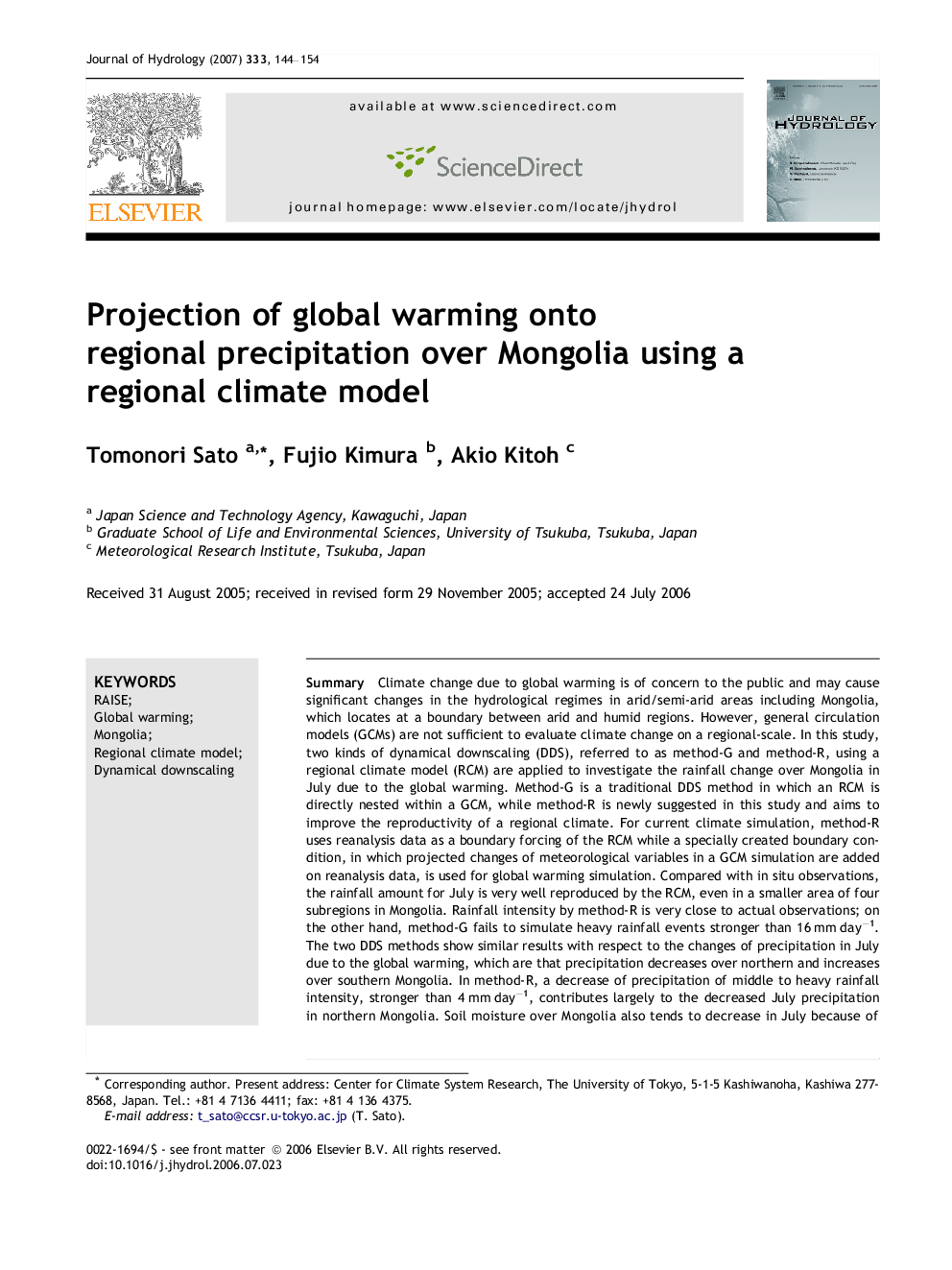| کد مقاله | کد نشریه | سال انتشار | مقاله انگلیسی | نسخه تمام متن |
|---|---|---|---|---|
| 4580158 | 1333122 | 2007 | 11 صفحه PDF | دانلود رایگان |

SummaryClimate change due to global warming is of concern to the public and may cause significant changes in the hydrological regimes in arid/semi-arid areas including Mongolia, which locates at a boundary between arid and humid regions. However, general circulation models (GCMs) are not sufficient to evaluate climate change on a regional-scale. In this study, two kinds of dynamical downscaling (DDS), referred to as method-G and method-R, using a regional climate model (RCM) are applied to investigate the rainfall change over Mongolia in July due to the global warming. Method-G is a traditional DDS method in which an RCM is directly nested within a GCM, while method-R is newly suggested in this study and aims to improve the reproductivity of a regional climate. For current climate simulation, method-R uses reanalysis data as a boundary forcing of the RCM while a specially created boundary condition, in which projected changes of meteorological variables in a GCM simulation are added on reanalysis data, is used for global warming simulation. Compared with in situ observations, the rainfall amount for July is very well reproduced by the RCM, even in a smaller area of four subregions in Mongolia. Rainfall intensity by method-R is very close to actual observations; on the other hand, method-G fails to simulate heavy rainfall events stronger than 16 mm day−1. The two DDS methods show similar results with respect to the changes of precipitation in July due to the global warming, which are that precipitation decreases over northern and increases over southern Mongolia. In method-R, a decrease of precipitation of middle to heavy rainfall intensity, stronger than 4 mm day−1, contributes largely to the decreased July precipitation in northern Mongolia. Soil moisture over Mongolia also tends to decrease in July because of the combined effect caused by the decrease of precipitation and the increase of potential evaporation due to rising air temperature. This situation indicates that severe droughts may occur more frequently from the effects of global warming.
Journal: Journal of Hydrology - Volume 333, Issue 1, 30 January 2007, Pages 144–154